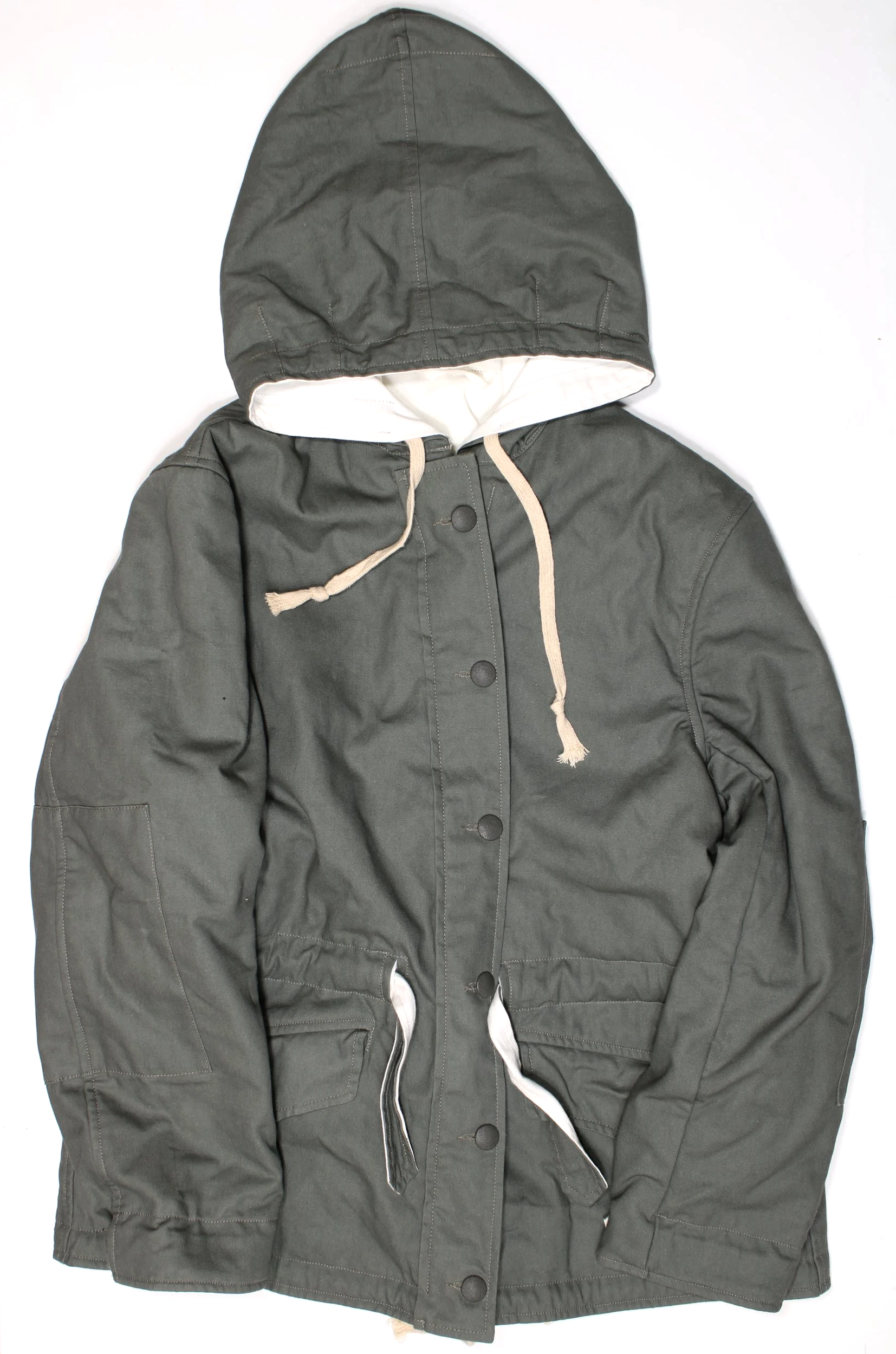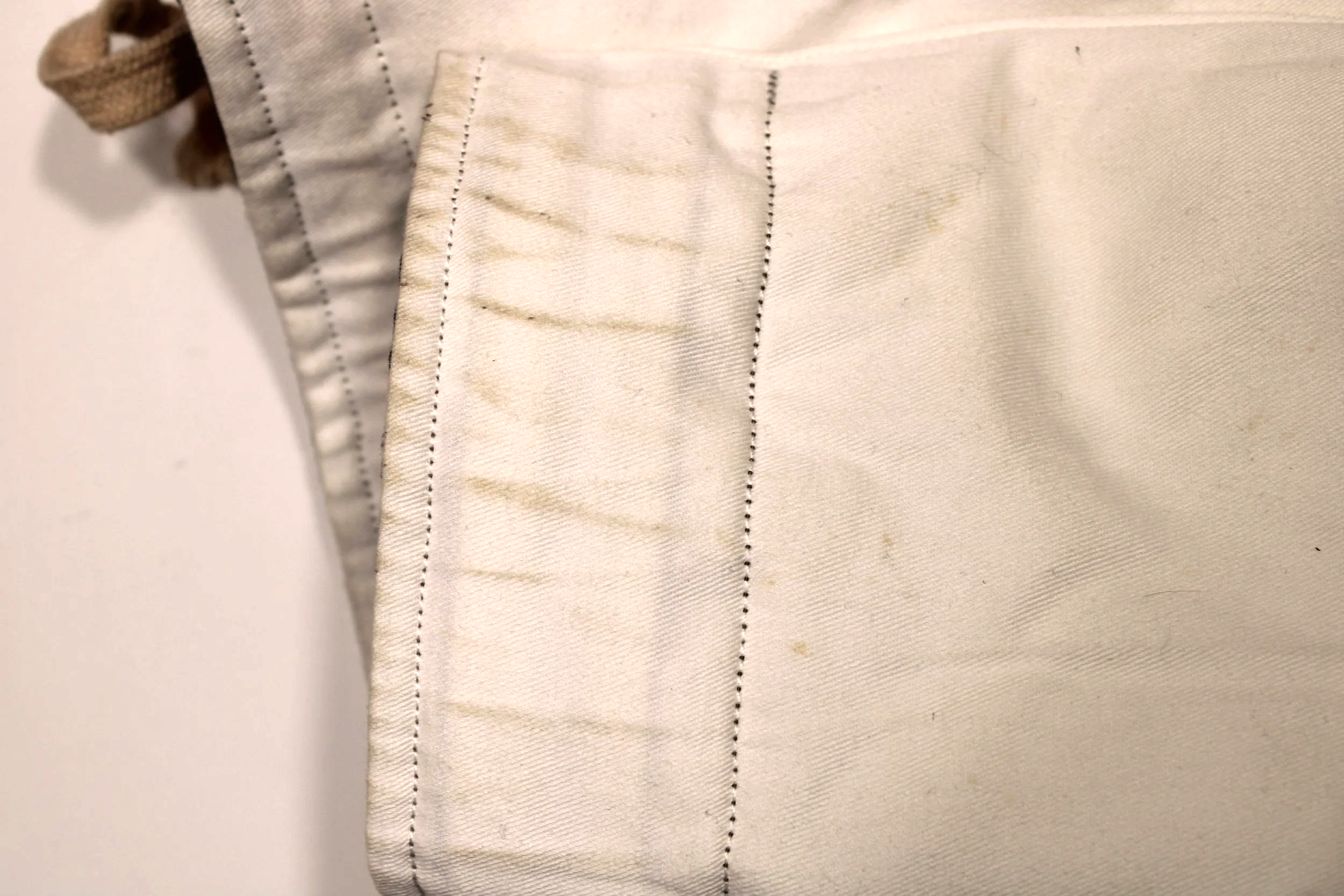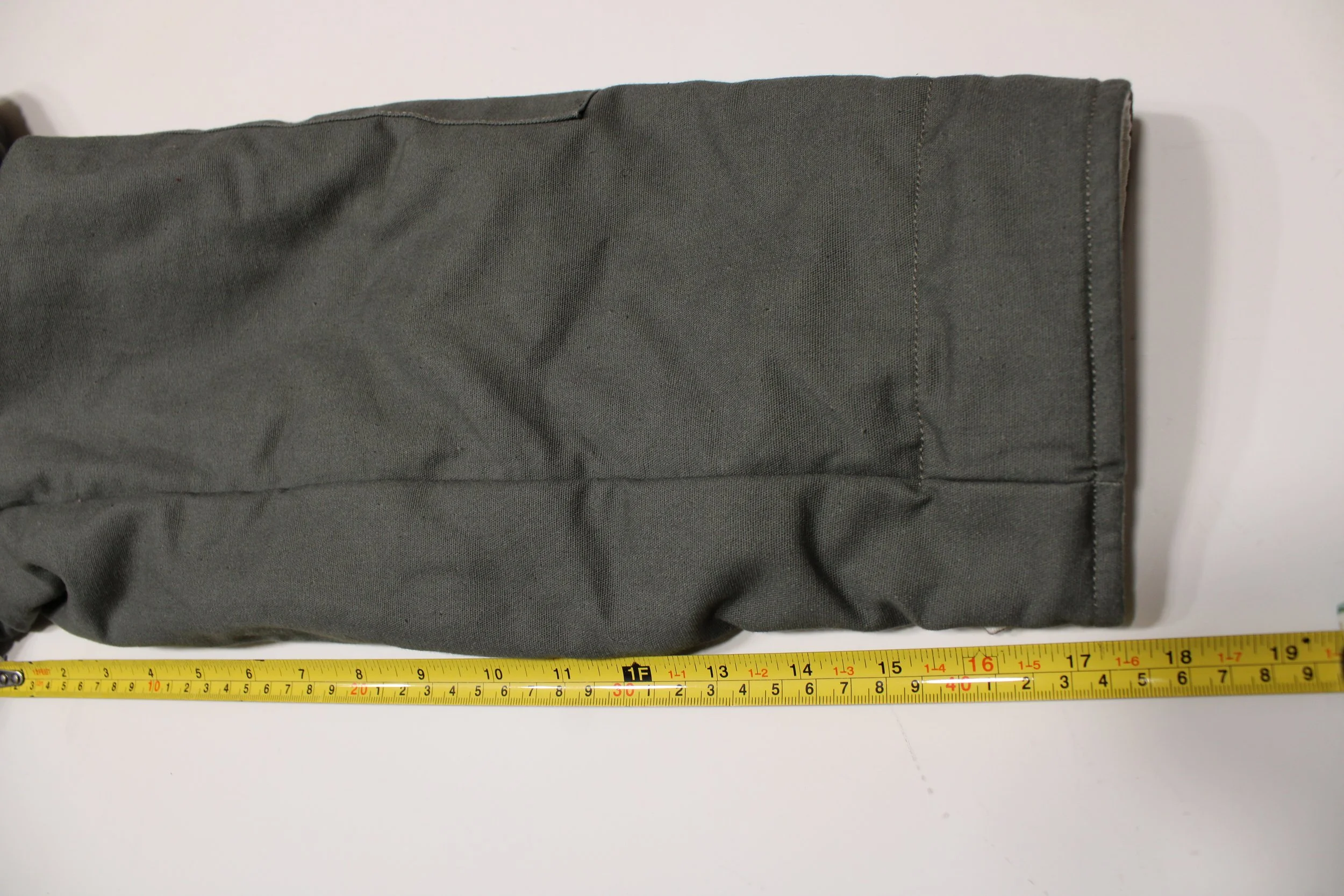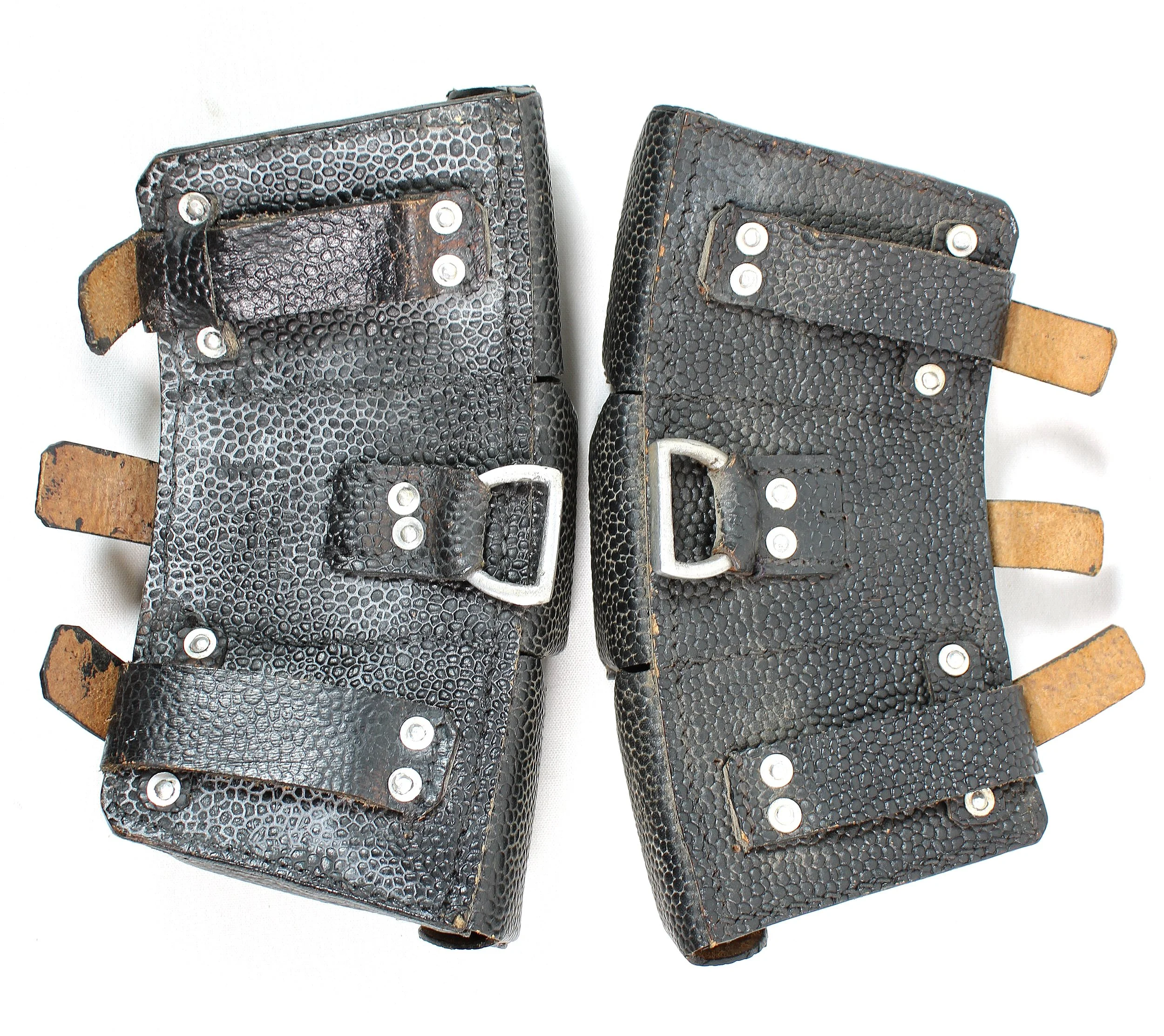 Image 1 of 11
Image 1 of 11

 Image 2 of 11
Image 2 of 11

 Image 3 of 11
Image 3 of 11

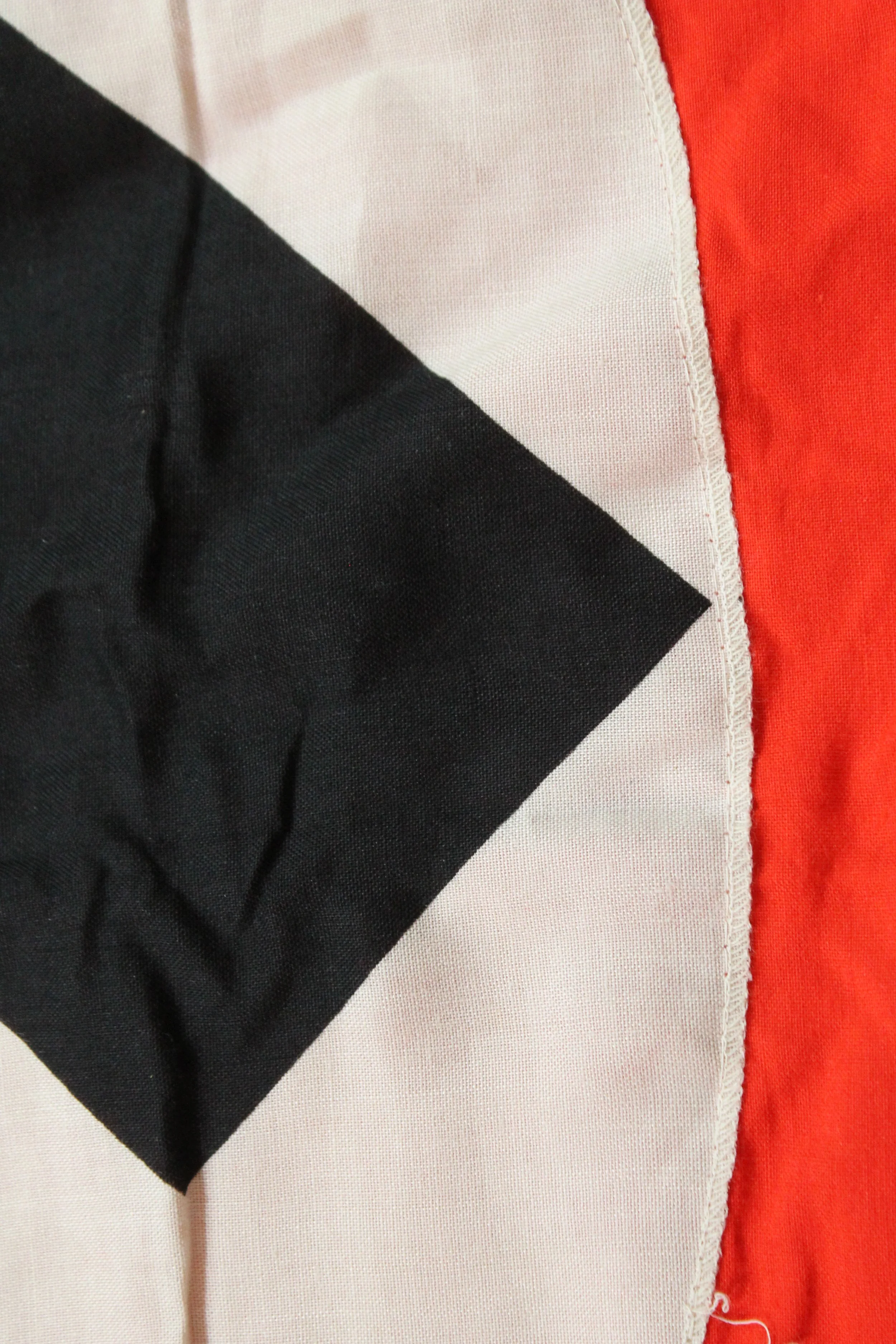 Image 4 of 11
Image 4 of 11

 Image 5 of 11
Image 5 of 11

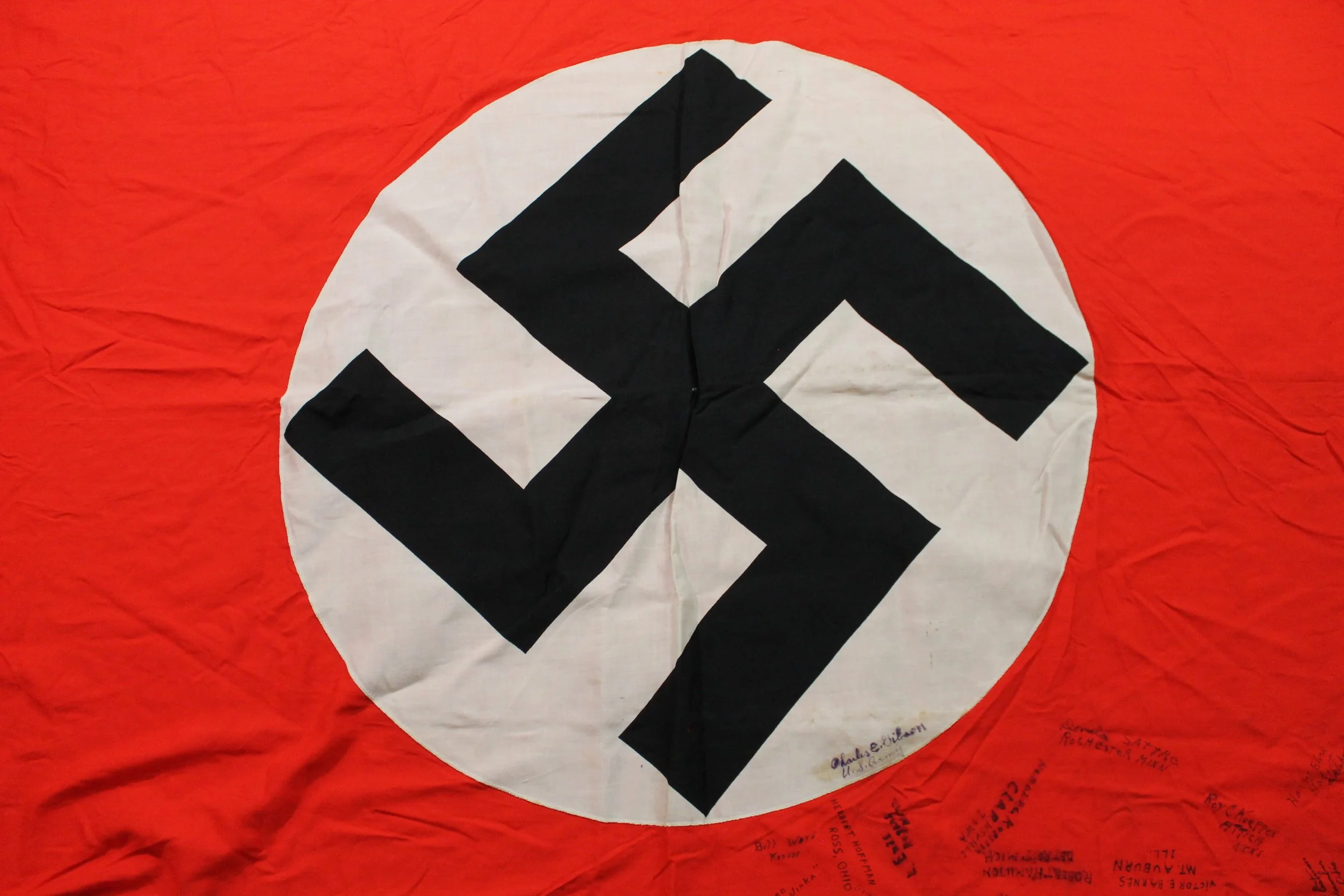 Image 6 of 11
Image 6 of 11

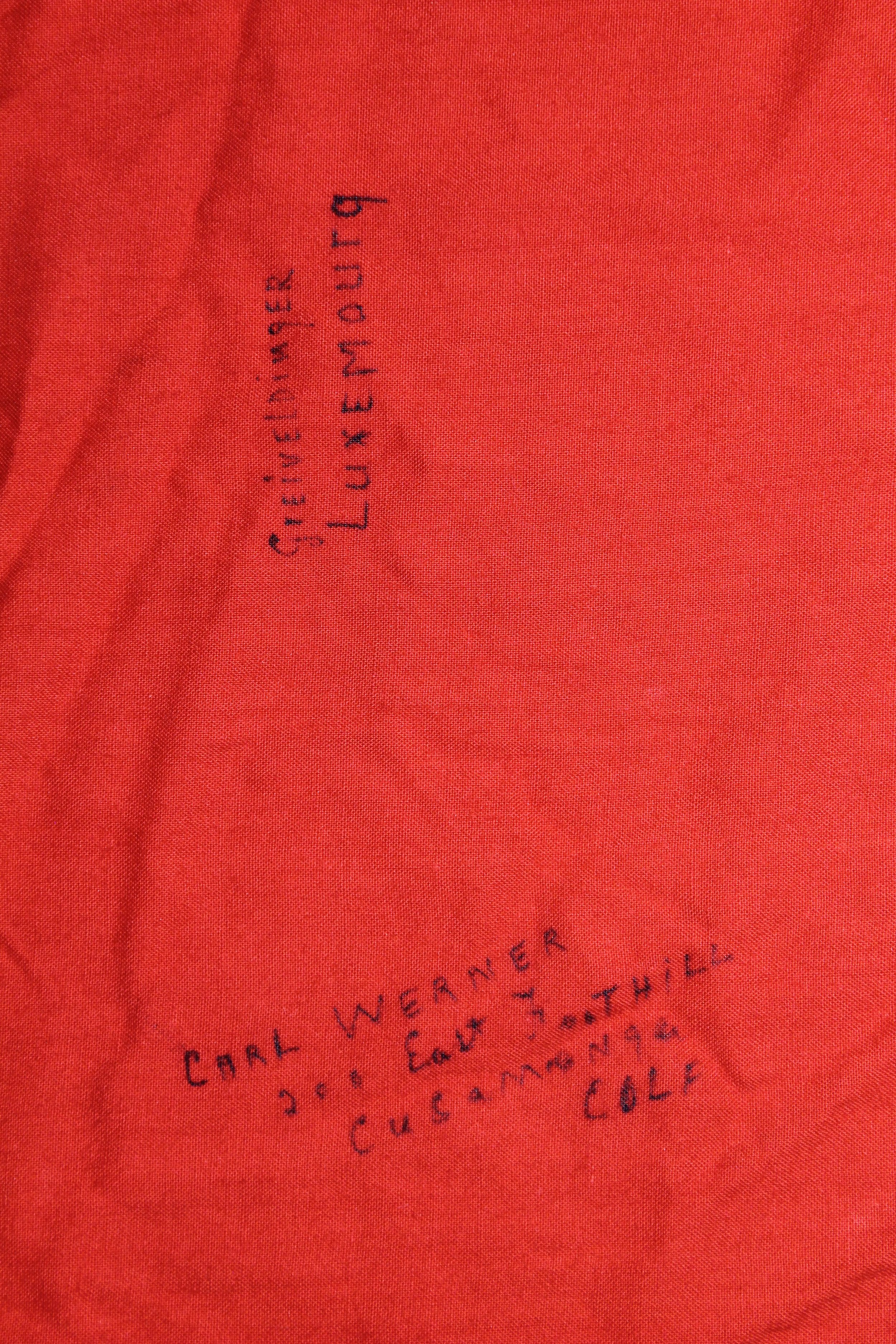 Image 7 of 11
Image 7 of 11

 Image 8 of 11
Image 8 of 11

 Image 9 of 11
Image 9 of 11

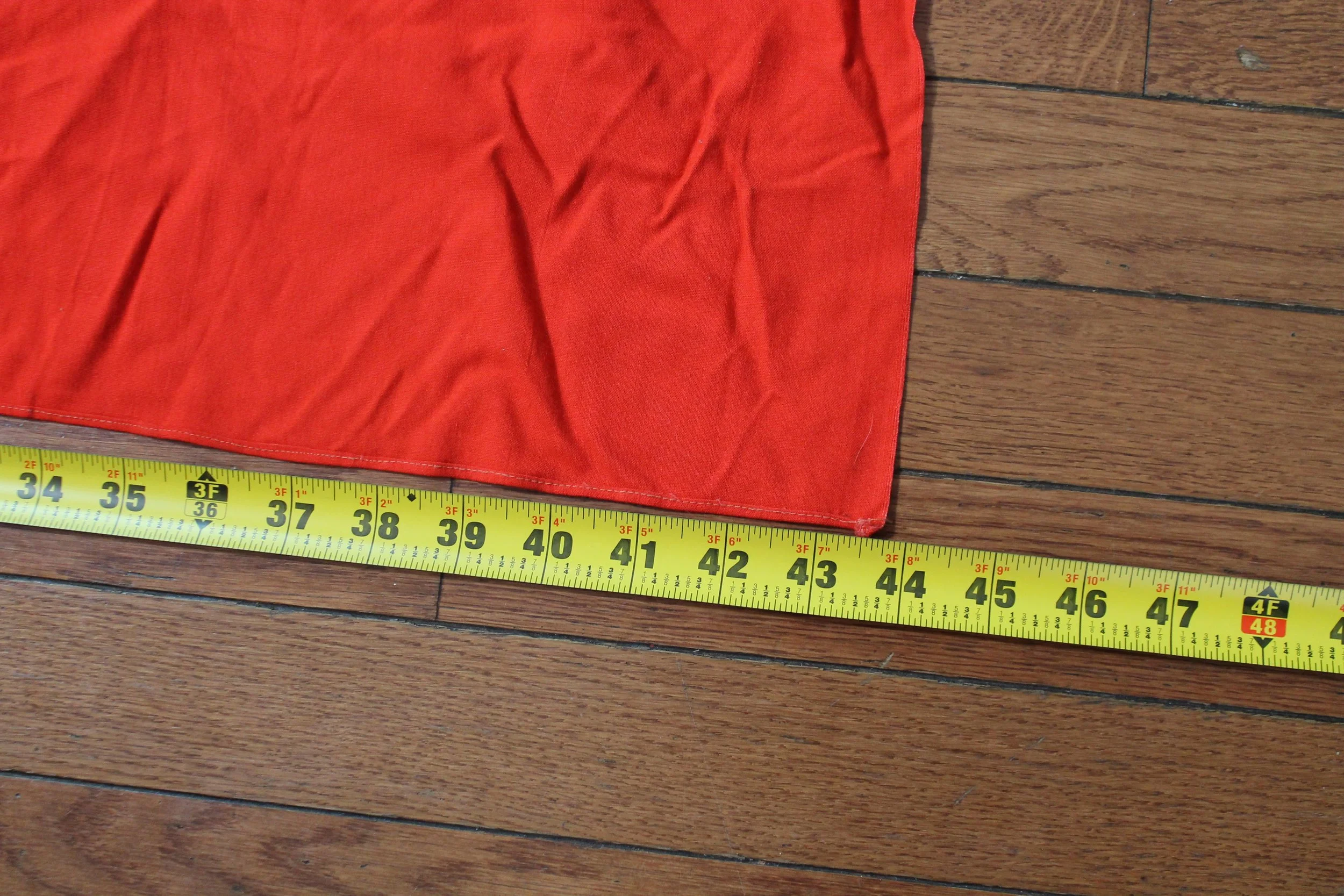 Image 10 of 11
Image 10 of 11

 Image 11 of 11
Image 11 of 11












WW2 German Original 99th and 80th ID US GI Battle Of The Bulge And Dachau Liberators Autographed Souvenir Nazi Party (NSDAP) Flag
WWII German Original Nazi (NSDAP) Banner with 23 signatures of heroic US Gi’s that fought in the Battle Of The Bulge and through Europe into Germany, liberating 3 Dachau work camps and 1 concentration camp!
Lots of research to be done on the soldiers Names on the flag, I’ve included some information on a few of the veterans who signed the flag. There are books and video interviews out there on these men.
All Signatures include names, towns and states making research easy.
Harry Block. 1 Jan 1913 - 25 Apr 1979. From the book, (The Men & Women in WWII from Kiowa County) T/3 Harry Block, He entered the Army in May 1942, trained in Ft. Riley KS, Ft. Sill OK and Camp Polk LA. He served in England, France, Luxembourg, Belgium and Germany. He was awarded the Good Conduct Medal and the EAME Ribbon with three Battle Stars.
Stanley R. Poucher. July 13, 1920 - September 13, 2006 Enlisted in the Army in 1942, rose to the rank of Technician Third Class (Staff Sergeant) in the 131st Armored Ordnance Maintenance Battalion, and served with Company M, 319th Infantry Regiment in the infamous Battle of the Bulge.
Victor E. Barnes. Army Serial Number: 16090376, Technician 5th Grade, Ordnance Department.
Harold C Koester U.S. Army, Technician Fourth Grade - Sergeant (T/4) [E-5] (1942 to 1945)
Charles Gibson. In a video interview Charles tells his story. Drafted into the Army Infantry in 1944 and reported to Fort Leavenworth, Kansas for processing. He was inducted into the 99th Infantry Division and sent to Camp Fanning, Texas for basic training as a 30-caliber water-cooled machine gunner. He was immediately shipped overseas, given a quick review of his training behind the lines, and sent into battle. Gibson met General George Patton, whom he describes as roundly disliked, just weeks before Patton was fatally injured in a jeep accident in December 1944. Gibson fought in the Battle of the Bulge (December 1944-January 1945) in Belgium, and describes his experiences during the battle in detail. Although he and his machine gun crew moved forward at every opportunity, they spent three straight weeks in one flooded foxhole, during which time his boots froze to his feet. He developed blood poisoning in one leg from a badly infected foot. A young medic in the outfit talked the commander out of sending Gibson to a field hospital to have the infected leg amputated before the blood poisoning spread further. The medic saved Gibsons leg and feet using herbal concoctions made from what he knew to find in the surrounding forest. Gibson was treated for multiple shrapnel wounds received during the battle and was sent back to a hospital in Belgium for a few weeks to be treated for double pneumonia after the battle ended. He rejoined the 99th Division as it pushed into Germany and fought until the German surrender in May 1945. Gibson describes the crowded Hudson River as the big transport ships arrived in New York City with returning ETO servicemen in September 1945. He was discharged from the Army soon thereafter and returned to his home in Sparks, Kansas. Charles E. Gibson, 89, -TEC 4- US Army-World War II Veteran-of Largo, FL died on July 11, 2010 at Helen Ellis Hospital, Tarpon Springs, FL form natural causes. During his military career, TEC 4 Gibson served under General George Patton in the Ardennes, Rhineland and Central Europe. He was awarded a American Theater Ribbon, European African Middle Eastern Theater Ribbon with 3 Bronze Battle Stars; two overseas bard; one service stripe and a Good Conduct Medal.
This is a amazing piece of history marked my the men who fought some of the toughest battles of WWII.
Condition is Outstanding (near mint) and a very large nearly 8’ x 4’.
99th Infantry Division Campaigns during World War II
The 99th Infantry Division was formed in 1942 and deployed overseas in 1944. The "Checkerboard" or "Battle Babies" division landed at the French port of Le Havre and proceeded northeast to Belgium. During the heavy fighting in the Battle of the Bulge, the unit suffered many casualties, yet tenaciously held its defensive position. In March 1945, the 99th advanced into the Rhineland, crossing the Rhine River at Remagen on March 11. After fighting in the Ruhr area, the unit moved southward into Bavaria, where it was located at the end of the war.
The 99th Infantry Division and the Liberation of Dachau Subcamps
On May 3–4, 1945, as the 99th moved deeper into Bavaria, it liberated one of a number of Dachau subcamps near the town of Mühldorf. The unit reported on May 4, that it had "liberated 3 labor camps and 1 concentration camp." The concentration camp was one of the "forest camps" (Waldlager) tied to the Mühldorf camp complex. The 99th Infantry's report stated that 1,500 Jews were "living under terrible conditions and approximately 600 required hospitalization due to starvation and disease."
Recognition as a Liberating Unit
The 99th Infantry Division was recognized as a liberating unit by the US Army's Center of Military History and the United States Holocaust Memorial Museum in 1992.
99th Infantry Casualty Figures
Casualty figures for the 99th Infantry Division, European theater of operations:
Total battle casualties: 6,553
Total deaths in battle: 1,168
99th Infantry Division Nickname
The 99th Infantry Division, the "Checkerboard" division, gained its nickname from the division's insignia. The insignia was devised upon the 99th's formation in 1942, when the division was headquartered in the city of Pittsburgh. The blue and white checkerboard in the division's insignia is taken from the coat of arms of William Pitt, for whom Pittsburgh is named. The division was also known as the "Battle Babies" during 1945, a sobriquet coined by a United Press correspondent when the division was first mentioned in press reports during the Battle of the Bulge.
Killed 1,130
Wounded 3,954
Missing 421
Captured 598
Battle Casualties 6,103
Non-Battle Casualties 5,884
Total Casualties 11,987
https://history.army.mil/documents/eto-ob/99ID-ETO.htm
WWII German Original Nazi (NSDAP) Banner with 23 signatures of heroic US Gi’s that fought in the Battle Of The Bulge and through Europe into Germany, liberating 3 Dachau work camps and 1 concentration camp!
Lots of research to be done on the soldiers Names on the flag, I’ve included some information on a few of the veterans who signed the flag. There are books and video interviews out there on these men.
All Signatures include names, towns and states making research easy.
Harry Block. 1 Jan 1913 - 25 Apr 1979. From the book, (The Men & Women in WWII from Kiowa County) T/3 Harry Block, He entered the Army in May 1942, trained in Ft. Riley KS, Ft. Sill OK and Camp Polk LA. He served in England, France, Luxembourg, Belgium and Germany. He was awarded the Good Conduct Medal and the EAME Ribbon with three Battle Stars.
Stanley R. Poucher. July 13, 1920 - September 13, 2006 Enlisted in the Army in 1942, rose to the rank of Technician Third Class (Staff Sergeant) in the 131st Armored Ordnance Maintenance Battalion, and served with Company M, 319th Infantry Regiment in the infamous Battle of the Bulge.
Victor E. Barnes. Army Serial Number: 16090376, Technician 5th Grade, Ordnance Department.
Harold C Koester U.S. Army, Technician Fourth Grade - Sergeant (T/4) [E-5] (1942 to 1945)
Charles Gibson. In a video interview Charles tells his story. Drafted into the Army Infantry in 1944 and reported to Fort Leavenworth, Kansas for processing. He was inducted into the 99th Infantry Division and sent to Camp Fanning, Texas for basic training as a 30-caliber water-cooled machine gunner. He was immediately shipped overseas, given a quick review of his training behind the lines, and sent into battle. Gibson met General George Patton, whom he describes as roundly disliked, just weeks before Patton was fatally injured in a jeep accident in December 1944. Gibson fought in the Battle of the Bulge (December 1944-January 1945) in Belgium, and describes his experiences during the battle in detail. Although he and his machine gun crew moved forward at every opportunity, they spent three straight weeks in one flooded foxhole, during which time his boots froze to his feet. He developed blood poisoning in one leg from a badly infected foot. A young medic in the outfit talked the commander out of sending Gibson to a field hospital to have the infected leg amputated before the blood poisoning spread further. The medic saved Gibsons leg and feet using herbal concoctions made from what he knew to find in the surrounding forest. Gibson was treated for multiple shrapnel wounds received during the battle and was sent back to a hospital in Belgium for a few weeks to be treated for double pneumonia after the battle ended. He rejoined the 99th Division as it pushed into Germany and fought until the German surrender in May 1945. Gibson describes the crowded Hudson River as the big transport ships arrived in New York City with returning ETO servicemen in September 1945. He was discharged from the Army soon thereafter and returned to his home in Sparks, Kansas. Charles E. Gibson, 89, -TEC 4- US Army-World War II Veteran-of Largo, FL died on July 11, 2010 at Helen Ellis Hospital, Tarpon Springs, FL form natural causes. During his military career, TEC 4 Gibson served under General George Patton in the Ardennes, Rhineland and Central Europe. He was awarded a American Theater Ribbon, European African Middle Eastern Theater Ribbon with 3 Bronze Battle Stars; two overseas bard; one service stripe and a Good Conduct Medal.
This is a amazing piece of history marked my the men who fought some of the toughest battles of WWII.
Condition is Outstanding (near mint) and a very large nearly 8’ x 4’.
99th Infantry Division Campaigns during World War II
The 99th Infantry Division was formed in 1942 and deployed overseas in 1944. The "Checkerboard" or "Battle Babies" division landed at the French port of Le Havre and proceeded northeast to Belgium. During the heavy fighting in the Battle of the Bulge, the unit suffered many casualties, yet tenaciously held its defensive position. In March 1945, the 99th advanced into the Rhineland, crossing the Rhine River at Remagen on March 11. After fighting in the Ruhr area, the unit moved southward into Bavaria, where it was located at the end of the war.
The 99th Infantry Division and the Liberation of Dachau Subcamps
On May 3–4, 1945, as the 99th moved deeper into Bavaria, it liberated one of a number of Dachau subcamps near the town of Mühldorf. The unit reported on May 4, that it had "liberated 3 labor camps and 1 concentration camp." The concentration camp was one of the "forest camps" (Waldlager) tied to the Mühldorf camp complex. The 99th Infantry's report stated that 1,500 Jews were "living under terrible conditions and approximately 600 required hospitalization due to starvation and disease."
Recognition as a Liberating Unit
The 99th Infantry Division was recognized as a liberating unit by the US Army's Center of Military History and the United States Holocaust Memorial Museum in 1992.
99th Infantry Casualty Figures
Casualty figures for the 99th Infantry Division, European theater of operations:
Total battle casualties: 6,553
Total deaths in battle: 1,168
99th Infantry Division Nickname
The 99th Infantry Division, the "Checkerboard" division, gained its nickname from the division's insignia. The insignia was devised upon the 99th's formation in 1942, when the division was headquartered in the city of Pittsburgh. The blue and white checkerboard in the division's insignia is taken from the coat of arms of William Pitt, for whom Pittsburgh is named. The division was also known as the "Battle Babies" during 1945, a sobriquet coined by a United Press correspondent when the division was first mentioned in press reports during the Battle of the Bulge.
Killed 1,130
Wounded 3,954
Missing 421
Captured 598
Battle Casualties 6,103
Non-Battle Casualties 5,884
Total Casualties 11,987
https://history.army.mil/documents/eto-ob/99ID-ETO.htm





